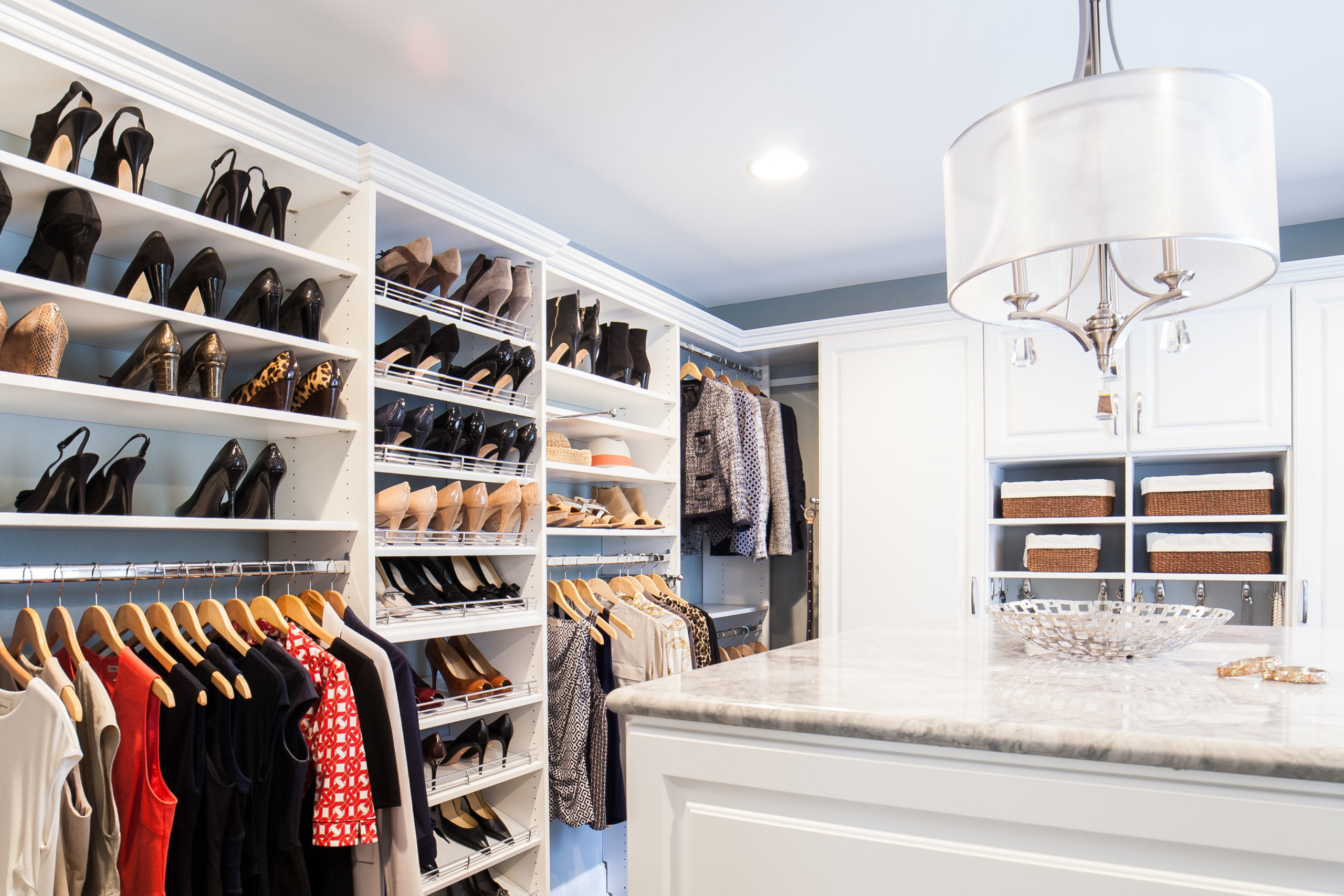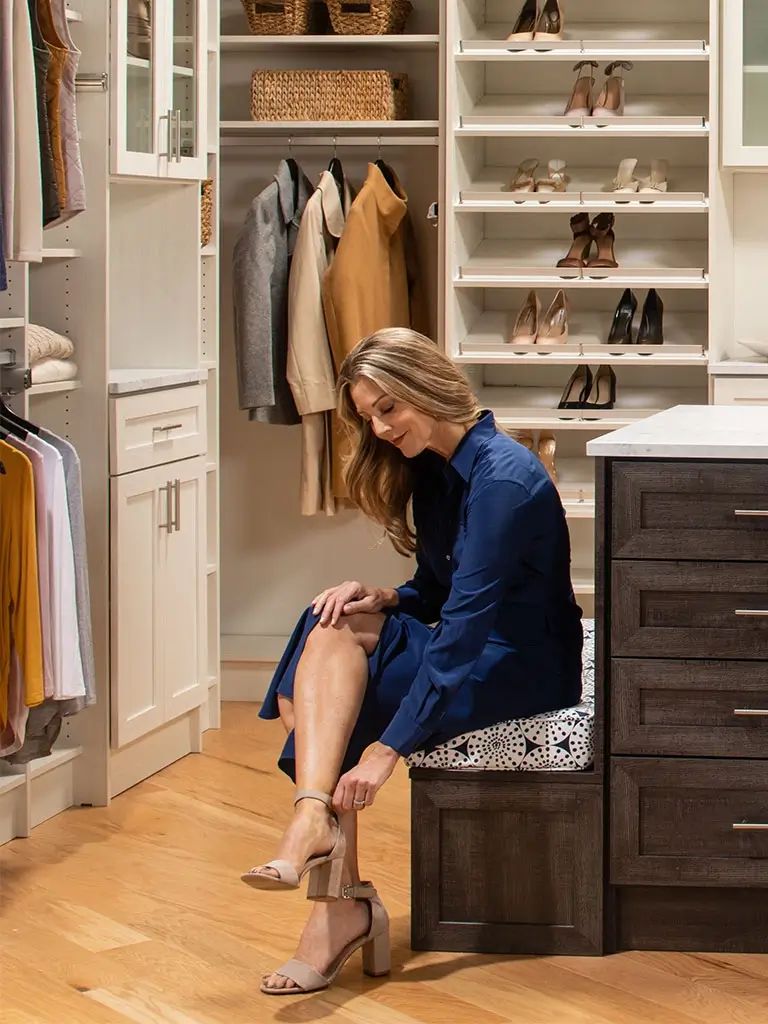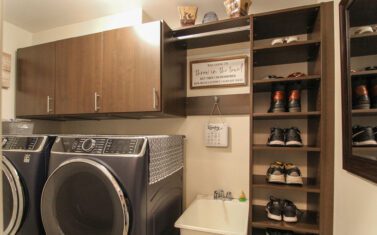
How Your Closet Can Help Prevent Damage to the Clothes That Are Your “DC Uniform”
6 minute read, by Closet America, on Jun 1, 2016
Suits and business attire are the ‘uniform’ of most DC residents. Make sure you’re handling your clothes (both before and after wear) correctly, to minimize any damage.
It’s no secret to those of us who live in and around Washington that DC is a fast-paced city filled with high-powered, demanding jobs. If you look at the number of workers in sectors like business and financial firms, legal services, management, and public relations, you realize that well over 60% of Washington DC employees fill these roles. DC isn’t some sleepy town in the midwest, it’s a competitive city where time is short and expectations are long.
Part of that competitiveness can be seen in the “DC dress code.” If DC had a uniform, it would be the suit – a sign of serious people engaged in serious business. It’s not enough to do a great job in the capitol, you also need to look sharp while doing it. That might be easy to do when your suit is fairly new and still looking good, but maintaining your style gets more difficult as time goes on and wear and tear sets in.
Damage to formal clothing can be costly, so it’s important that you take good care of your work clothes at all times. You probably make a concerted effort to do so while you’re wearing them, but don’t forget that how you store your clothing may be just as harmful as getting careless with that red sauce you got with your lunch. Your clothes actually spend the vast majority of their time somewhere other than on your body. Storing them properly, both before and after you wear them, is essential for extending their life.
Damage Can Happen in Any Phase of the Clothing Cycle
There are three repeating phases in the life of an article of clothing. It’s either being (1) stored, (2) selected and worn, or (3) removed for cleaning and/or re-storage. There is potential for damage in all of these phases, though much of the risk goes overlooked.
Damage to clothing can occur in the first phase when closets and dressers aren’t organized well and lack storage options for specific items. The most common issue we see with closets is that they become a crowded mess, and formal items tend to get jammed right in there with everything else. It’s easy for nice clothes to get tangled up, wrinkled, snagged, or stretched out while they’re simply waiting to be worn.
Everywhere you turn there is opportunity for second-phase damage. Any time you’re eating a meal, drinking coffee, walking down the street, or on the Metro, bad things can happen to your clothing. There’s a whole world of potential hazards out there, and sometimes it seems like they are just waiting for you to start your day.
Third phase damage happens after you change clothes, when you’re separating what needs to be washed and re-stored from what doesn’t. This is another underappreciated area of clothing care. If there is a pile of dirty clothes anywhere in your room, a number of things can happen to them while they are crumpled up on a dusty floor being stepped on, kicked around, or tripped over.
Avoiding Damage Done During Storage
Every item of yours needs a home that works for it. Too many of us make do with the standard closets that came with our homes when we bought them. The closet may be too small, but even if everything does fit, it’s unlikely that a wardrobe bar with a shelf on top is going to enable you to store your garments correctly. A custom closet solution is essential for storing formal clothing safely.
Since so many of you wear the DC uniform, your closet should be designed with suit storage in mind. Most people (myself included for many years) store their suits with the pants folded over the bar of the hanger that the jacket is on. This might seem like a time and space saver, but it’s also a great way to create a set of creases right around the thighs on your slacks. The guys can learn something from the ladies here: A suit with a skirt is better stored using a jacket hanger with clips, and this is true for slacks as well. The problem in many closets, though, is that pants hang down too low when you hang them this way. You always want to keep suit pieces together, so a closet with custom spacing to accommodate your suits will help greatly with this problem.
 Smaller accessories are another important aspect of the DC uniform, and they are another difficult set of items to store. Racks for your ties, belts, and scarves, and a felt-lined jewelry tray for your watches, bracelets, necklaces or cufflinks will keep these items from becoming a tangled mess and so help them avoid damage. A shoe rack is another important item that will help you organize your different footwear and keep your dress shoes from getting crushed and scuffed at the bottom of your closet.
Smaller accessories are another important aspect of the DC uniform, and they are another difficult set of items to store. Racks for your ties, belts, and scarves, and a felt-lined jewelry tray for your watches, bracelets, necklaces or cufflinks will keep these items from becoming a tangled mess and so help them avoid damage. A shoe rack is another important item that will help you organize your different footwear and keep your dress shoes from getting crushed and scuffed at the bottom of your closet.
If you wear a lot of hats, you know how easy it can be for them to lose their shape. Keep them out of harm’s way and make them easier to find when you need them by incorporating shelving with enough vertical space to store them correctly. When it comes to sweaters, avoid stacking them (which causes creasing) and instead install shallow pull-out drawers so each sweater can be stored flat and on its own.
Reduce Clothing Damage During and After Wear
While we’d love to have the answers for how to improve all aspects of your life, how you should treat your clothes while you wear them falls outside our scope of advice. You’re on your own here, but when it’s time to get your clothes clean and put them away again, we’ve got you covered!
 To get your dirty clothes off the floor where they just get dirtier and risk being snagged and ripped, go with a laundry hamper system. Tilt-out laundry hampers have become a very popular feature among our customers who wear the DC uniform. Many people install at least two of these, so that they can easily drop their colors into one and their whites into the other when they are changing in the evening. Extendable valet rods also come in handy during this part of the clothing cycle when you need to keep your suits safely set aside for dry cleaning.
To get your dirty clothes off the floor where they just get dirtier and risk being snagged and ripped, go with a laundry hamper system. Tilt-out laundry hampers have become a very popular feature among our customers who wear the DC uniform. Many people install at least two of these, so that they can easily drop their colors into one and their whites into the other when they are changing in the evening. Extendable valet rods also come in handy during this part of the clothing cycle when you need to keep your suits safely set aside for dry cleaning.
Once your clothes are clean again, there is the issue of ironing and putting them away. This might seem an unlikely time for clothing to be damaged, but the main snag in this process is that a lot of us fail to complete it. If you’ve ever gotten ready in the morning by selecting clean items out of a laundry basket, then you know what I’m talking about. What tends to happen here is that your clean clothes get deep set-in wrinkles that effectively make them unwearable without another wash and dry cycle. This accelerates fading and general wear, and ultimately shortens the life of your clothes.
Many of our customers have found that they can encourage themselves to actually complete the laundry process if they fold and iron their clothes in or very near their closet, right after they get them out of the dryer. A fold-out ironing board installed in your closet is a big help here. Clothes can go straight from the ironing board to their hanger and have little chance for damage in between. If you have a walk-in closet, a center island is a great place to do your folding so that you give yourself no opportunity to just set those clean clothes aside to get wrinkled. Whatever your closet contains, it needs to be a solution specifically designed for your space and your clothes.
Preserve Your Clothes in a Custom-Designed Closet
With a little help from Closet America, you can design a clothing storage system that works for your specific wardrobe and helps you take care of your clothes in all of their phases (Well, the storage and after-wear phases, anyway. Don’t order the red sauce. That’s all we’ve got for phase two). You’ve invested a lot into your DC Uniform, so don’t let it get ruined by your standard closet and all of its shortcomings, when you can actually help craft a space based on the very clothes you wear. If you want to know more about the possibilities, schedule a design consultation with us, where we will create a 3D model of the ideal space setup, so you can really visualize your closet solution. Our design consultations are free – unlike the cost of replacing your suit.
Closet America is the D.C. area’s leading creator of custom-made home offices, designer closets, garages, pantries, mudrooms, and laundry storage spaces. Our experienced team of designers and engineers help create unique solutions that are customized with your needs in mind. With Closest America, you can have everything in its place, perfectly. Schedule a free design consultation today!




